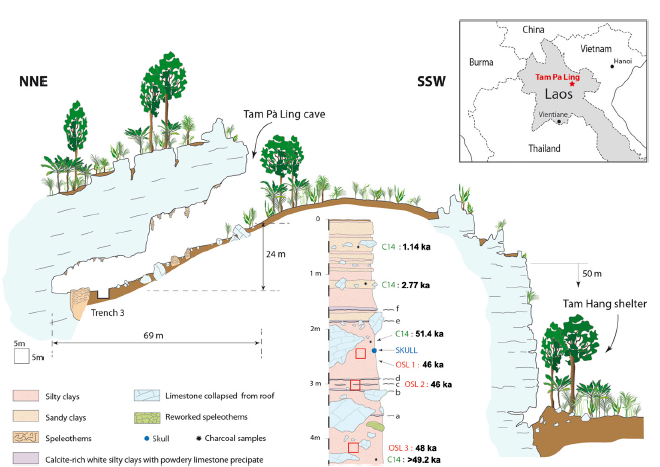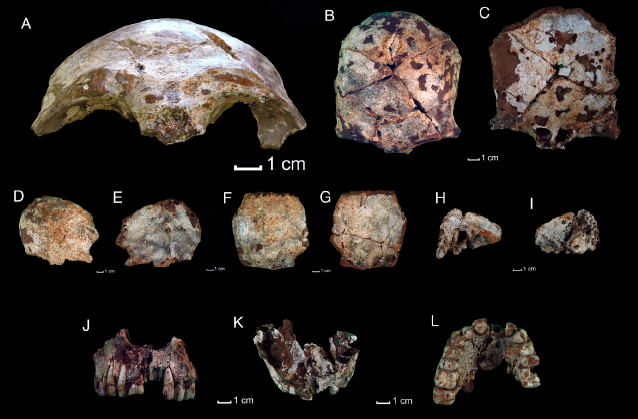Find could lend credence to idea that man evolved in Asia, rather than Africa
For scientists the evolution debate regarding man is far from over. No, not that debate -- the debate among researchers largely involves where the earliest primates (which predate the hominids that surveyed the Pleistocene plains of Africa) evolved, and also where humans migrated early in their history.
A newly published
study [abstract] in the prestigious peer-reviewed
Proceedings of the National Academy of Sciences journal offers both the oldest confirmed human skull fossil, and evidence of early migration from mankind's likely evolution location (in Africa) to a new home in Southeast Asia.
Researchers traveled to a cave near Tam Pa Ling in the Annamite Mountains where a 16,000-year-old human skull was discovered in the early 1900s. Searching deeper, they found a skull that was dated (using direct uranium dating) to a maximum age of 63,000 years ago. Combined with luminescent (which measures stored energy from solar heat/radiation in the crystalline component of soil buried in dark locations) and carbon dating of the surrounding sediments, it was determined that the individual -- whose gender was not determined in the work -- lived between 46,000 and 51,000 years ago.

© PNASThe fossils were found in a mountainous cave in Laos.
The preserved remains were likely a lucky accident, a result of the frequent deposition of sediment in the cave after rains. Researchers believe that the individual was not living in the cave, but rather washed in post-death, based on the fact that no artifacts were discovered during the extensive excavation.
University of Illinois anthropologist
Laura Shackelford, study co-worker, suggests the difference between the radioactive and sediment dating indicates the time between death and deposition in the cave may have been substantial. She states, "Those dates are a bit younger than the direct date on the fossil, which we would expect because we don't know how long the body sat outside the cave before it washed in."

© PNASThe fossil skull is the oldest human remain to be found in Southeast Asia.
On the importance of the find, she remarks, "It's a particularly old modern human fossil and it's also a particularly old modern human for that region. This fossil find indicates that the migration out of Africa and into East and Southeast Asia occurred at a relatively rapid rate, and that, once there, modern humans weren't limited to environments that they had previously experienced. We now have the fossil evidence to prove that they were there long before we thought they were there."
The study offers an intriguing premise -- primates may have evolved in Asia, eventually migrating to Africa. There they may have slowly advanced, eventually becoming what today is known as humans. Then they made a return to the stomping ground of their ancestors, sometime around 50,000+ years ago.
The study in PNAS had 13 other co-authors.
Fabrice Demeter, of the
National Museum of Natural History in Paris, was the first author; Anne-Marie Karpoff of France's
Institut de Géologie was the senior author.
The research was funded by a variety of French research organizations, the University of Illinois, the LAO federal government, and the
Leakey Foundation.


Reader Comments
to our Newsletter